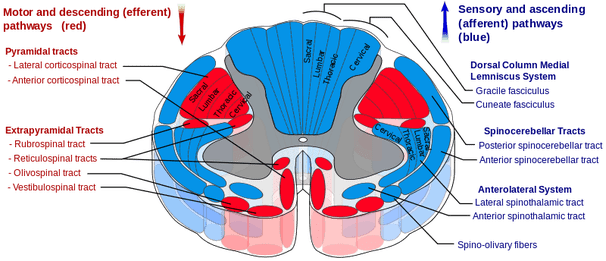WE KNOW IT HELPS PEOPLE WITH DEPRESSION
BUT WHY IS EXERCISE SUCH A HUGE PREVENTATIVE
STEP AGAINST VARIOUS FORMS OF DEMENTIA?
Study leader, Dr. Denise Head of Washington University in St. Louis looked at 200 healthy individuals (ages 44 to 88) with a family history of Alzheimer’s, but no cognitive symptoms of their own. The doctors then did PET Scans to look for Amyloid Plaques (the tell-tale sign of Alzheimer’s) inside the subject’s brains. After looking at genetic tendencies, they looked at the Exercise Habits of the individuals in the study over the past decade. As amazing as it sounds, the genetically predisposed part of the group (they are 15 times more likely to come down with Alzheimer’s), were able to bring their chances of developing Alzheimer’s down dramatically with regular exercise. How dramatically? Listen to the study’s conclusion. “physically active lifestyle may allow e4 carriers [those genetically predisposed] to experience brain amyloid levels equivalent to e4-negative individuals“. In other words, exercise leveled the playing field, wiping out the 1,500% increase in genetically induced Alzheimer’s —- living proof that sickness and disease is much more related to EPIGENETICS than it is to genetics.
But not surprisingly, what else did the authors conclude? They realized from the questionnaires that hardly anyone was exercising enough to actually lower the Amyloid Plaques. This is not surprising and I do not want to dwell on it. Instead, let’s discuss for a few moments the reason(s) that exercise can prevent Dementia.
ALZHEIMER’S AND PROPRIOCEPTIVE LOSS
The brain’s center for deciphering the Proprioceptive Messages are in the CEREBELLUM via the Spinocerebellar Tract — see above picture). Although the cerebellum was, up until recently, thought of as the “Lower Brain” (because it seemed to perform less-advanced functions in the body), we now know that this is far from true. Although the Cerebellum has some very specific functions related to what we call “lower functions”, a healthy Cerebellum is critical to overall neurological health.
WHAT SORT OF SPECIFIC EXERCISES SHOULD
WE BE DOING TO DIMINISH CHANCES OF ALZHEIMER’S?
- INCREASED PROPRIOCEPTION
- INCREASED CEREBELLAR FUNCTION
If you understand what these two things are and what they do, it is not difficult to grasp some of the reasons we may want to stimulate them. And as cool as it may sound, increasing Proprioception is automatically going to increase Cerebellar Function. The big thing we want to do is to exercise in ways that forces us to develop our sense of balance (proprioception). Although most people think of balance as having to do mostly with the inner ear, this is not really true. Balance mostly has to do with Proprioception. Just remember that Proprioception is the number one input into the brain. When you move or perform coordinated functions, you are heavily stimulating the brain. Here is a list of simple exercises (and non-exercise related activities) that will help stimulate proprioceptive function.
- STRETCHING: Increases Proprioception via increasing Ranges of Motion. Firing off more proprioceptors / mechanoreceptors is typically a good thing — a very good thing. Just be aware that if you are trying to stretch against Scar Tissue such as FASCIAL ADHESIONS, you can make yourself worse (HERE). When you stretch in yoga-lime combinations that involve balance, this is particularly beneficial.
- ANY EXERCISES (RESISTANCE-TRAINING INCLUDED) DONE ON AN EXERCISE BALL: Increases both balance and Ranges of Motion (HERE).
- WOBBLE BOARDS / BALANCE BOARDS / TRAMPOLINES: There are others, and they all work in similar fashion to the Exercise Ball to increase balance.
- WORKING OUT WITH FREE WEIGHTS INSTEAD OF MACHINES: This increases both balance and Range of Motion — especially using dumbells with an Exercise Ball. HERE are some great examples.
- SCAR TISSUE REMODELING: Yes; the dramatic increases in Range of Motion can actually work just like exercise. This happens via two different pathways. First, it happens because releasing FASCIAL ADHESIONS causes a potentially huge increase in ROM, which in turn increases proprioception (it fires off many more mechanoreceptors). Secondly, by diminishing CHRONIC PAIN, we know we can help prevent (or possibly reverse) Alzheimer’s-like Dementia. Click the links to understand why.
- NEW ACTIVITIES: Although I am speaking of physical activities here (one of my Functional Neuro Professors recently taught himself to play the banjo and speak German), we could be speaking of mental activities as well. Anything new is going to stimulate your brain. Remember the old adage ‘Use it or Lose it‘? It is as true for the brain as it is for the body.
- THINK TWICE ABOUT FLU SHOTS: We have known for decades that Flu Shots cause (or at the very least contribute to) Alzheimer’s Disease (HERE).
- CONTROL BLOOD SUGAR: Critical to understand if you want to keep your cognitive ability into old age (HERE).
- WHOLE BODY VIBRATION: This hot modality is being touted as a ‘cure all’ for a wide variety of health problems. Why? Because your body’s vibration centers are located in the Cerebellum. Stimulate the Cerebellum, and stimulate the body’s ability to do all sorts of beneficial things — including strengthening the control centers for the spinal postural muscles. More information on WHOLE BODY VIBRATION



One Response
How light or heavy a workout should a person do, various types of workout? Does the workout depend on age?